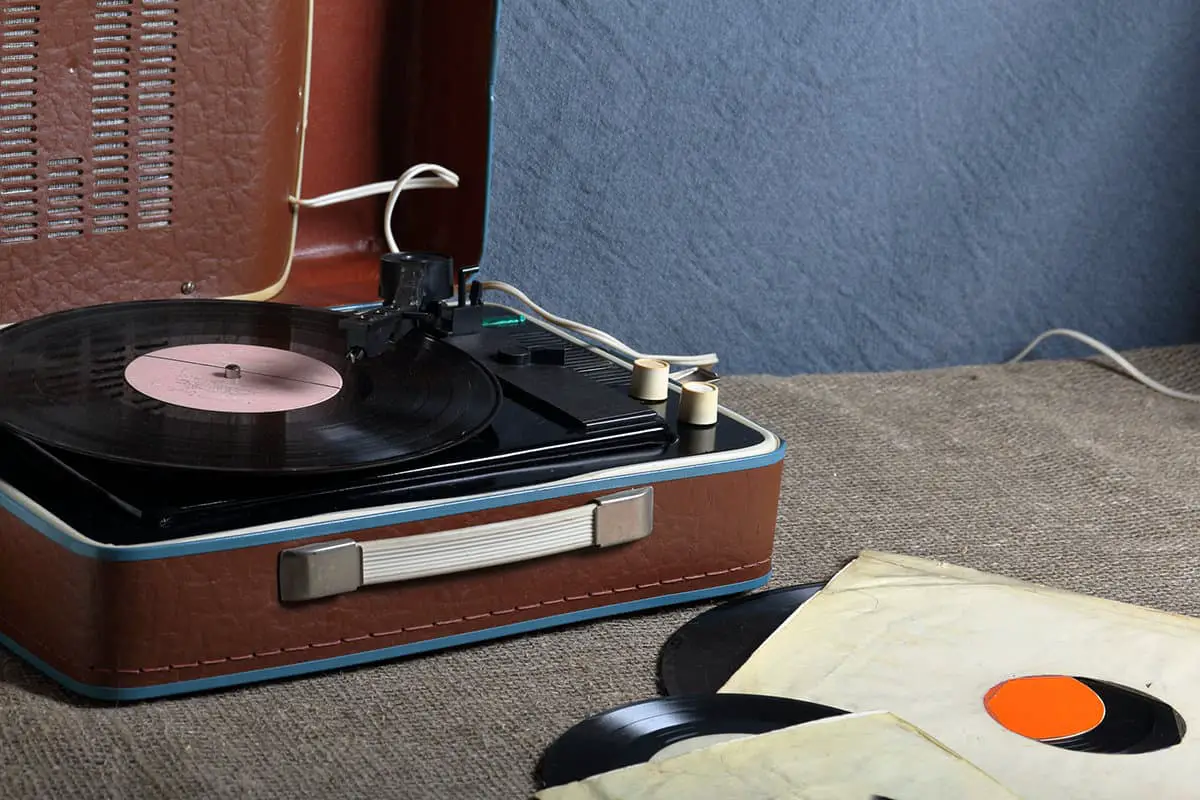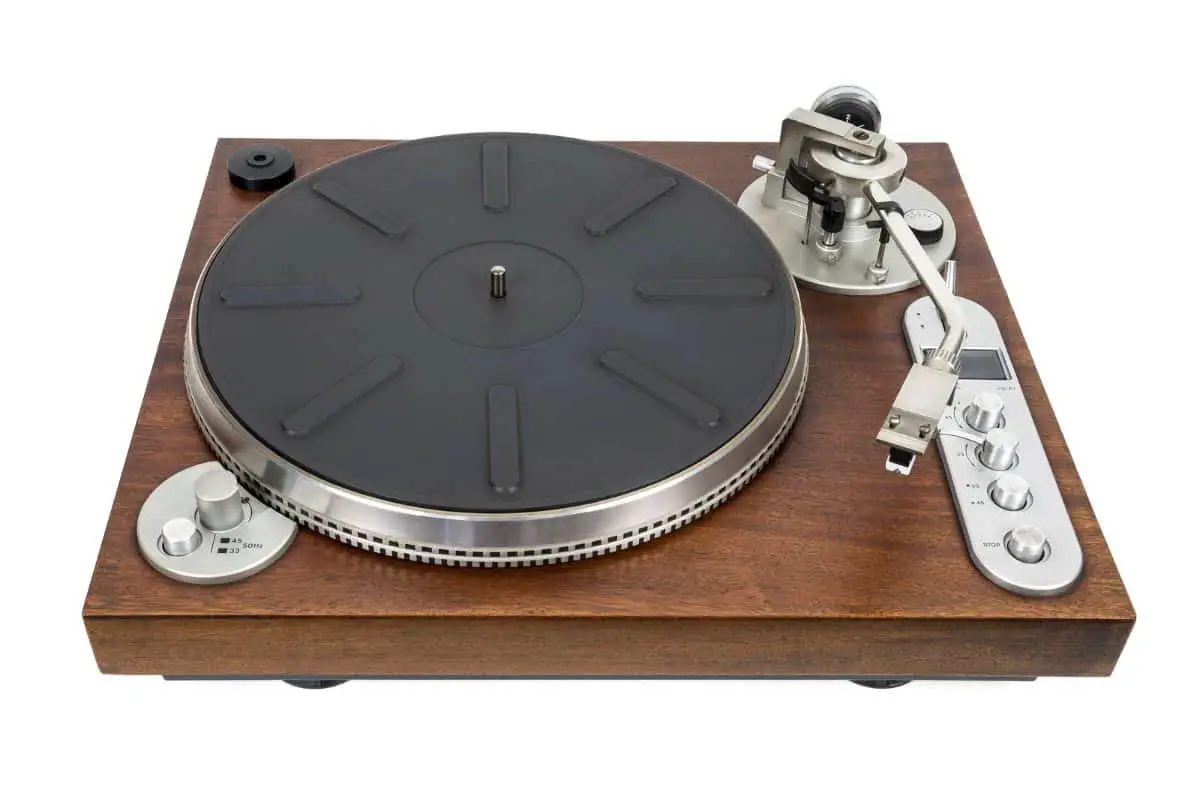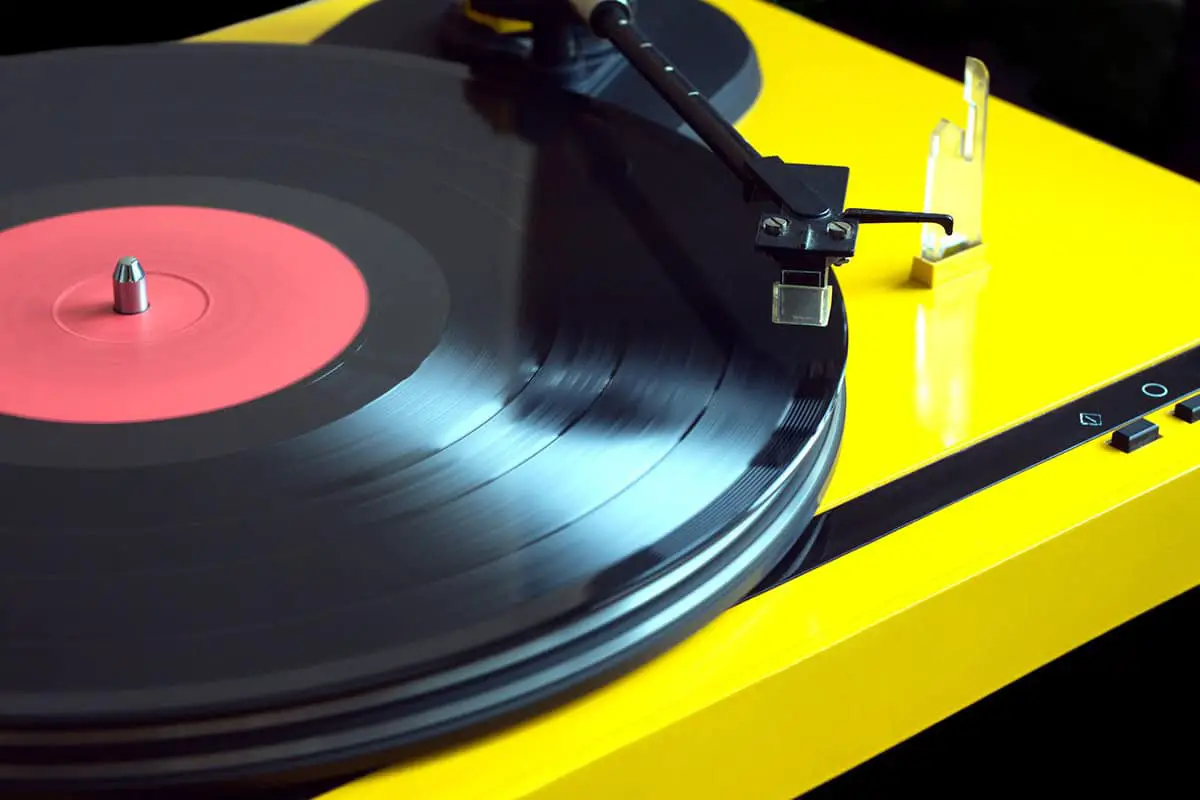This post contains affiliate links.

Your record player cartridge comes with a stylus, also referred to as a needle that sits on the record’s groove. Unfortunately, when that needle goes, you’ll need to replace it, but are they all the same? Can you just swap it out with a generic one? I wanted to know if they were all the same, so after thorough research, this is what we found out.
When it comes to stylus or needles, no one needle fits all. Therefore, all turntables don’t use the same needle or stylus. After all, they have different designs, and different types of stylus vary in designs, material, even how they mount.
The cartridge is the most crucial part of the record player responsible for reading the vibrations on the vinyl record. In this article, we will show you why record players don’t use the same needle. We will also show you the different types of needles for record players.
Table of Contents
What Is A Stylus?
A stylus is a uniquely shaped needle that rests on the record player’s grooves and helps pick the vibrations. In fact, the names needle and stylus are used most of the time interchangeably. The needle is the only part of the turntable that comes into contact with the vinyl record. Unfortunately, this component is subjected to hard wear thanks to the pressure it applies to the grooves. (source)
Luckily, there are three desired characteristics of these needles:
- The needle faithfully follows the vinyl record’s groove contour and picks the transmitted vibrations.
- Secondly, the needle does not break the vinyl record despite the amount of force used while on the record’s grooves.
- The stylus is resistant to wear; therefore, it can take years before you ever have to replace your turntable’s needle or cartridge. (source)
Remember, a damaged needle can degrade the quality of sound produced and damage the vinyl records’ grooves. Manufacturers have used different materials to make the needle over the years; in fact, Thomas Edison introduced a diamond stylus in 1910 and a sapphire one in 1892. The early record players used short-lived needles besides the diamond and sapphire stylus.
In fact, the most preferred materials for turntable needles over the years have been tungsten, copper, steel, and bamboo, among others. Unfortunately, steel needles needed replacement regularly, thanks to the high wear and tear rate. Therefore, the adverts asked folks to replace the steel needle after listening to each side of the record player, which meant that you had to purchase lots of needles at once.
Luckily, the steel needles were relatively cheap; in fact, you could get a packet of 500 needles for only 50 American cents. Plus, they were sold in small tins and packets. These needles varied in length and thickness. The longer stylus produced muted softer tones while the short, thick ones made loud, intense sounds. Therefore, record players used the same needle in the past, so you had to pick which type of music you wanted to listen to and enjoy. (source)
The shortage of steel in 1916 forced people to turn to tungs-tone needles. Produced by Victor, these needles played between 100 to 300 records before being replaced. They were long, so you had to use them until they were too short to be used. (source)
Therefore I am sure you are wondering, do record players use the same needles? Technology has changed over the years with better and reliable needles produced. After all, high-end turntables don’t use the same needles as the low-end record players.
Do All Record Players Use the Same Needle?
All turntables come with many components that work together to convert the vibrations to music. And depending on the cartridge, record players can be grouped as the moving coil and magnet cartridges. (source)
The cartridges are electromagnetic generators that convert the vibration (mechanical movement) picked by the stylus. The cartridge converts the vibrations to an electric signal amplified and converted to sound by the amplifier and speakers.
Both the magnetic coil and moving magnet cartridges use a coil and a magnet, vibrating in unison with the needle assembly. These cartridges come with either a permanent or removable stylus; therefore, each turntable brand has a unique needle. Luckily, there is a perfect replacement that you can install in your record player.
Remember, low-end record players, come with a permanent cartridge that supports needle replacement. So when upgrading your turntable, you can install a new high-end stylus that can improve your listening experience.
Therefore, turntable styli are not universal; every turntable comes with a specific needle. After all, folks are allowed to upgrade the stylus of their low-end turntable with the high-end options. But for it to work, you have to make sure that it is compatible with your record player’s original needle. So you may have to do some research online for compatible options for your turntable.
Plus, different types of needles vary in material, size, and shape. These needles also vary in shank construction. Therefore, when replacing your turntable’s needle, you can’t just walk into the local store and pick the first stylus you get on the shelf. You have to choose a replacement needle that matches your device’s needle.
You have to make sure that the replacement needle fits your cartridge perfectly and is compatible with your device. Luckily, many replacement needles match your device online that you can order.
Construction Of The Stylus

Before we even talk about the different types of needles, we need to consider the shank construction. Remember, this needle sits at the tip of the cantilever in the cartridge connected to the tonearm. The needle attached to the cantilever is either a tipped diamond or a nude diamond.
Just as the name suggests, the tipped diamond comes with a diamond tip on the stylus, while the other part consists of metal. But with the nude diamond, the stylus is made from diamond and attached to the cantilever. Luckily, the diamond tracks easily and accurately; plus, it has a lower mass, which means it applies less pressure on the vinyl record’s grooves.
The diamond-tipped needles are less costly to produce, but they increase the stylus’s overall mass. This design will affect the transient response of the tipped diamond than a nude stylus.
Types Of Stylus
As aforementioned, there is no one fits all needle. And that is because every manufacturer tries to design a perfect needle for their different record players. Plus, these needles are designed for reading certain types of vinyl records.
Generally, there are four types of needles, excluding those meant for reading the 78 RPM records. After all, the needles for reading the grooves on 78 RPM are about four times wider than the typical needle for 33 1/3 records. (source)
The radius of the tip for a 78 RPM stylus is about 20mm, and anything smaller than that can ride low in the vinyl’s grooves. A typical stylus will produce noisy signals with a 78 RPM record, accelerating its wear. Plus, 78 RPM records are pretty rare these days, so the four types of the stylus are:
Conical Or Spherical Stylus
The spherical stylus is the most common and the least costly in the market. (source) This stylus resembles the tip of your ballpoint pen. And thanks to their huge radius, this stylus traces less on small grooves with high frequencies.
The rate of wear and tear with the spherical is debatable among members of the Hi-Fi community. Some claim that this needle produces the most wear since the contact region is restricted to only 2 points. On the other hand, some music lovers claim that the spherical stylus produces minor wear. (source)
This stylus has a radius of about 0.6mil*; therefore, it does touch the center of the vinyl record’s groove. This device works perfectly with older and lower to moderately priced turntables. Plus, the tonearm tends to apply high tracking force than the other types of needles. (source)
Elliptical Stylus
The second most common needle in the market is the bi-radial or elliptical stylus. The elliptical stylus contacts a larger area of the grooves than the dual radii. It guarantees you lower distortion (especially in the hard-to-track parts of the grooves), improved phase response, improved frequency response, and more precise tracking.
These needles tend to wear a bit faster than the conical stylus. So, you will have to pay attention to the tonearm alignment and cartridge for perfect results. (source) The elliptical stylus has two radii; the wider front radii and the side radii. Its unique design makes it possible for the needle to track the middle of the groove. At the same time, the side radius allows it to track more accurately. (source)
Compared to the spherical stylus, this needle has a narrower back to the front area and an extended vertical contact region. This needle is available in 3 sizes: 0.4 by 0.7mil, 0.3 by 0.7mil, and 0.2 by 0.7mil, with the first number representing the side radius. Remember, the smaller the side radius, the better the sound quality produced. The smaller the tip radius, the less tracking force you will ever need. (source)
Hyper Elliptical
The third most common stylus is the hyperelliptic needle, also referred to as stereohedron, fine line, or Shibata. This stylus represents the next phase of stylus evolution, which is sharpening the needle for more significant contact. When correctly aligned, this needle can offer low record wear, improved tracking, longer tip life, and high-frequency performance. This stylus has an even longer vertical contact area than the elliptical needles.
But thanks to its vast tracing footprint, this stylus can produce more noise on worn-out records. This stylus is ideal for high-end cartridges. (source)
The MicroLine Stylus
The Microline also referred to as the micro-ridge, is one of the most advanced needles in the market. This computer-designed needle has a unique tip that resembles the stylus used to make the master disc. Its unique multilevel ridge shape will guarantee high-performance frequency with exceptional life and extended record. Unfortunately, they are pretty expensive and difficult to manufacture. (source)
Why Does The Shape Of The Stylus Matter?
If you are a casual turntable enthusiast, you don’t have to lose too much sleep over the shape of the stylus. But for audiophiles, the shape of the stylus matters because of the following:
- The construction and shape of the needle play a key role in sound replication, thanks to its access to the groove’s surface.
- The shape of the stylus also plays a crucial role in the record player’s rate of wear and tear.
- The shape and construction affect the stylus price; therefore, if you have some cash and want to upgrade your record player, you need to know the benefits and types of the style.
How Do You Know When It’s The Right Time To Replace The Stylus?
Fortunately, physical and audible indicators can tell you when to replace the needle. A few things on the physical sign can show you if the needle is damaged. Some of them include:
- Misshaped or crooked needle tip
- The stylus may jump or skip out of the record’s grooves when playing.
- Accumulated muck on the tip of the stylus might be the culprit. The accumulated dirt can be black spots, which means that you haven’t cleaned your record player in a long time.
On the audible side, there are a few things you have to listen to and consider. Some of them include:
- The record won’t sound great when using a damaged or old stylus
- The record will produce a static or crackling noise
- It may create distorted music
When this happens, then it is time to replace the turntable needle. But make sure you get a suitable replacement for your record player. And if the record player’s needle cannot be removed, you will have to replace the entire cartridge. (source)
If you didn’t purchase a new turntable, the chances are that the needle is not in good shape. Plus, you don’t know if the previous owner took good care of it. So the first thing you should do is replace the stylus with a new one. You can even choose to upgrade your device’s needle to a high-end option.
How To Replace The Stylus
Generally, you should replace the needle after every 3 to 5 years or after 1,000 hours of play. So if you can replace your record player’s needle, then you should do the following:
- Unplug the turntable and hold its arm using your non-dominant hand.
- Grip the metal or plastic case covering the needle using the other hand
- Pinch the sides of the needle and remove it
- Slide the needle out of the cartridge while ensuring it is parallel to the tonearm. If the needle can’t come out, you will have to go online and look for the manual.
- If the stylus is attached to the cartridge frame, then it’s not removable. So you may have to replace the entire cartridge.
- With the old stylus removed, you can look for a perfect replacement. Most needles have some numbers or letters on them. These numbers are the model numbers, and they can help you get a replacement. You can order a suitable replacement online or a better option if you’re upgrading the turntable.
- Slide the new needle into the cartridge with the stylus facing outside. Remember, the stylus is very sharp; you should wear some rubber gloves, but make sure you don’t touch the needles’ tip. (5)
FAQs
Does The Stylus Fit Any Turntable?
The stylus, also referred to as the needles, are not universal. Every turntable uses a certain kind of stylus, so it is technically impossible to replace your record player’s needle with a different type of needle. So make sure they are compatible with the original stylus before purchasing it.
How Do I Know If The Needle For My Turntable Can Be Replaced?
If you are not sure it is replaceable, you can look at the tonearm. You can replace the needle if some screws mount your cartridge to the tonearm. But if there are no screws, you will not be able to replace them.
Are All The Needles Diamond?
Most of the modern needles are made using either sapphire or diamond. But there are some needles made from sapphire-diamond combination and steel. Therefore, not all needles are made from diamonds or have a diamond tip.
Conclusion
The needle is the most crucial part of the turntable, which is responsible for the quality of the sound produced by your record player. Unfortunately, no one needle fits all kinds of turntables. So before replacing your record player’s needle, you need to know the difference between the several types of needles in the market. Remember, before installing a different kind of needle, you have to make sure that it’s compatible.
Sources
- Audio-Technica staff, Audio-Solutions Question of the Week: What are the Differences Between Moving Magnet and Moving Coil Phono Cartridges? Accessed January 07, 2022
- Wikipedia Contributor, Phonograph, Accessed January 07, 2022
- Jess Thompson, The Different Types of Turntable Styli (and Which is Right for you) Accessed January 07, 2022
- Tucker Bowe, When Should You Replace Your Turntable’s Stylus, Accessed January 07, 2022
- Eric McClure, How to Change the Needle on a Record Player? Accessed January 07, 2022
VacationVinyl.com is a participant in the Amazon Services LLC Associates Program, an affiliate advertising program designed to provide a means for sites to earn advertising fees by advertising and linking to Amazon.com. We also participate in other affiliate programs which compensate us for referring traffic.



